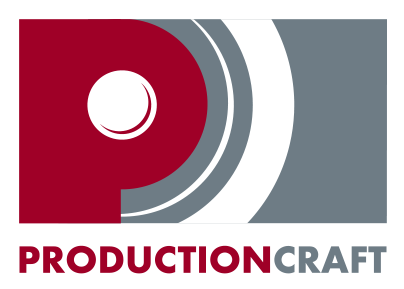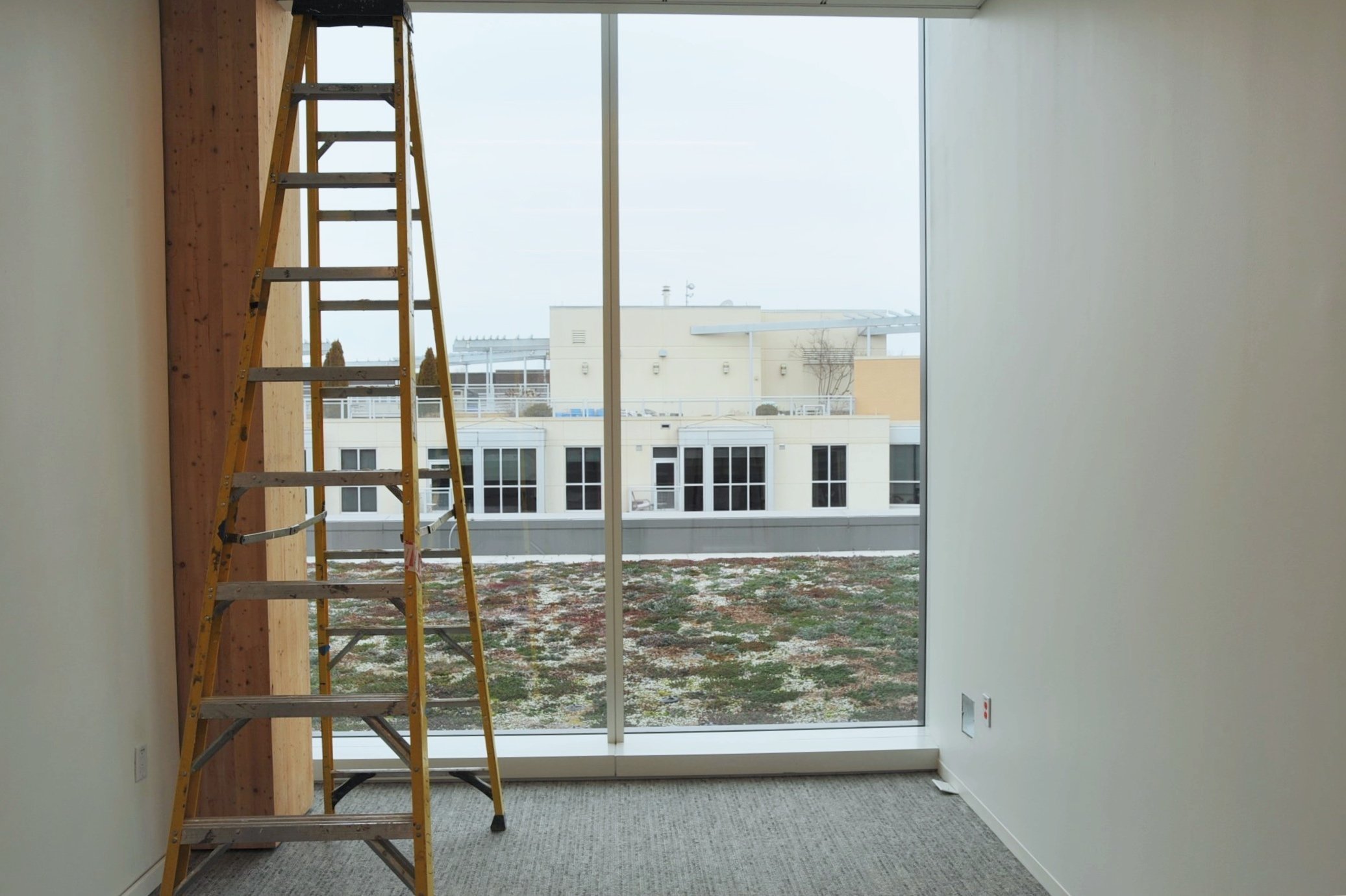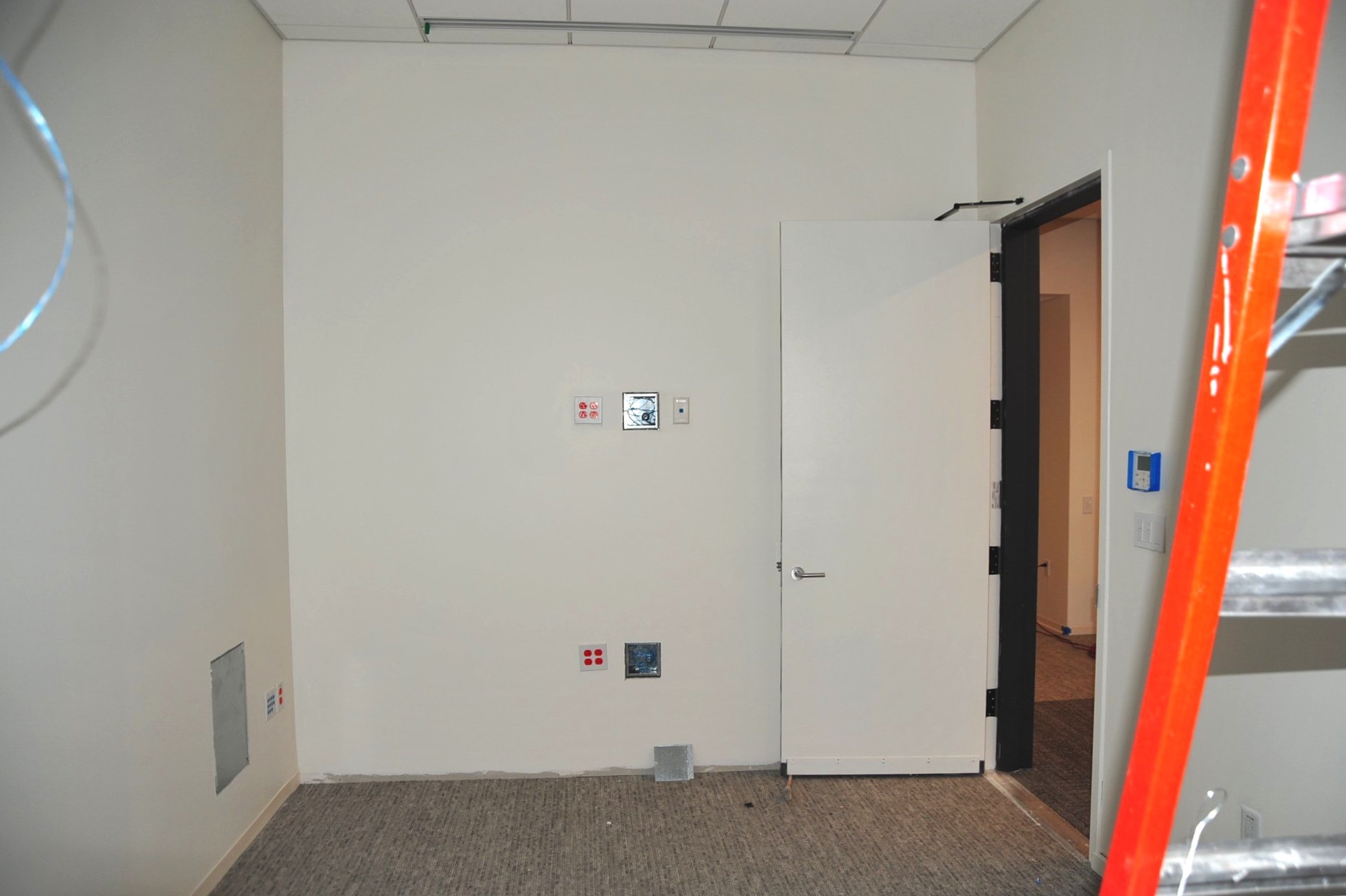Keep It Simple: Building a Video Conference Studio Part One
We recently had the opportunity to provide a turn-key video conferencing studio for a major multinational company.
As we usually design studios that include multiple cameras, audio sources, lighting grids, file recording, control room monitoring, etc., a client requesting a single-camera studio geared toward participation in Microsoft Teams calls seemed like a slam dunk... however the project turned out to be one of our most challenging jobs to date.
In this two-part blog series, we will first talk about the high-level challenges we faced on this project. In part two we will talk about the more granular obstacles relating to video production itself and how we overcame them using our experience in broadcast studio integration to tackle a new kind of video studio.
Timeline:
The video conferencing studio was part of a major deck-to-deck office buildout in Washington, DC. The overall construction project had been in the works for several years, drawings were set to go to permit, and our studio was injected into the mix with a set occupancy date. We had to get our plans together without a clear picture of the result to meet the existing permit schedule.
We formed a relationship with the project's architect who understood everything related to the overall construction project. She made it possible for us to succeed and we’re not sure what we would have done without her. Step One – make a friend!
At the outset, we had a clear directive, which was to create a system that used a cine-quality large imager camera, quality audio and production-level LED lighting, all of which would connect to a host Microsoft Teams computer.
Teams Requirements and Workflow:
One of our first questions is always: “Who will operate or support the operation of the system?” For this studio, high-level executive staff would be using the equipment, so a simple system would provide ease of operation.
Type of Meetings:
Executives would participate in two types of meetings. One was a standard Teams meeting where the invited gallery could see and hear our executive who would share content via a separate laptop.
The other meeting type was a full company town hall, where a guest laptop could display notes and prompts that only the local presenter could see. We did not want to require our presenter to worry about switching between two monitors, so the simple fix was to provide both a “Meeting Monitor” connected via a designated cable and a “Private Monitor” which was connected via another designated cable. The Meeting Monitor was used to transmit the presenter’s image & presentation to the audience and was mounted above the camera to improve eye contact. The Private Monitor, located below the lens, hosted any notes the presenter might need and was not viewable to anyone who wasn’t in the physical room.
Other Challenges
Network Security.
In a security-conscious Enterprise IT environment, all connected components needed to play nicely on multiple internal and external networks. Early on, we contacted the proper IT administrator, sharing needs, concerns, MAC addresses, and system drawings, so we were sure we met all their requirements. Making sure that the camera could securely function from anywhere in the world called for additional coordination.
High-End Look and Finish.
Making sure that our studio didn’t “look” like a studio but acted like one was our concern from day one. Since this room had to fit in with the look of high-end interior design detail that was present throughout the offices, we could not allow the room to look like your typical studio - built with concern for function rather than form - we needed both.
To this end, we accomplished the following based on our client's lead with a “White Theme.” Our equipment rack, wall-mounted camera / monitor support, and lighting support were all white. We designed and custom fabricated a racetrack oval-shaped lighting support that mirrored the talent desk in shape. This white powder-coated support was suspended 6” below the white acoustical ceiling.
For lighting, we chose the ROSCO DMG SL1 Switch lights which we have used before in corporate settings. They have exceptional performance and control as well as a very slim design that interior designers accept.
Project Coordination.
Since we were brought in later, we had to successfully integrate ourselves into the entire design and construction team that had been working together for more than a year before we joined the project. This wasn’t always easy as we had to make our requirements clearly known and justify them to multiple diverse groups so that we could accomplish the goals of our end customer. This task required time, perseverance, and making friends.
Communication.
In any large enterprise, we often found ourselves communicating on multiple levels. We had to work with corporate department heads as well as installing electricians and each communication task was equally important.
In part two, we will look at the technical video aspects and how the final studio came together.
Production Craft, Inc. is a video production company based in Chicago, serving markets worldwide.
We are proud to be a Women Business Enterprise (WBE) certified by the State of Illinois Business Enterprise Program (BEP) and the National Women Business Owners Corporation (NWBOC).





